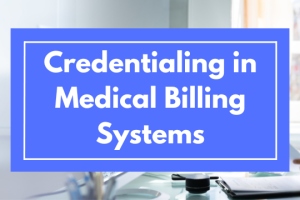More than ever before, consumers are paying close attention to how businesses operate. This means every interaction counts, with both staff and patients, to showcase your practice’s culture and values. However, offering satisfactory service isn’t necessarily enough on its own to maintain a good image.
At a time when anyone can make their opinion heard online, private practice owners need to be more involved in public relations than ever. This means managing interactions in person and online, and also keeping your eyes on social media, Google reviews, and the local news. Here’s what you need to manage your PR effectively.
What are Public Relations?
Public relations (PR) is the practice of managing how information is shared by your practice. While most of the information you share in PR engagements will be positive — like announcing a new team member or service — some will be negative, as would be the case with a security incident. In all cases, great PR will allow you to get the most benefit out of good events and minimize the impact of bad events.
It’s worth noting that PR is different from publicity, although one often involves the other. Publicity generally refers to information that is published by external parties, which means you’ll have little to no control over it. Like PR, publicity can be both positive and negative. Properly responding to and handling publicity is a matter of good PR strategies.
Strategies for Positive Public Relations
As a private practice, you have the ability to impact your local community in countless positive ways. However, it’s easy for the public to ignore things like equipment upgrades when they don’t really see a direct benefit for themselves. Yet, failing to call attention to milestones, upgrades, and improvements in your practice can make it harder to cultivate a strong brand. For this reason, you should have multiple strategies in place for showcasing all positive PR things, big and small.
Writing Your Own Press Releases
One of the easiest ways to call attention to positive things you wish to announce is to make a press release for your website. This may be just 300-500 words long, but it’s a great way to let your website visitors know about it. You can then syndicate it yourself by posting it on social media and sending it to your email list.
Getting Your Press Release Published
If it’s a grand enough announcement or a slow news week, another positive PR strategy you can use is sending your press release to local publications. In fact, taking the time to contact your local newspapers and news stations is a great way to get the email address of whoever is in charge of managing press releases. Once you have that info, you can send your press releases to them directly and cross your fingers that they’ll put it in print.
Being Featured on the News
For particularly exciting announcements that impact the community at large (like the opening of a new location), you should go the extra mile and pitch the story to local reporters, too. While you might not score an interview or on-site segment, a mere mention of it will help call attention to your practice. From there, you can follow up by tagging the news network on social media thanking them to inform and remind your followers of the feature.
Combating Negative Public Relations
When a negative PR event occurs, your goal should be crisis aversion. You’ll rarely be able to escape a negative event without any impact but acting swiftly and empathetically can help you ensure the event is forgotten and forgiven as quickly as possible.
Acknowledge the Event
One of the worst things you can do when negative PR happens is trying to brush it under the rug. While you pretend like it isn’t happening, your audience will be waiting for a response, and silence can leave them thinking the worst about you. While you might think you’re calling more attention to the event, properly responding to the negative PR will help you minimize its impact.
A great example of this is if a consumer posts a negative review about your practice online, perhaps chastising your team for canceling their appointment last minute. In this case, you could send a public response to their review and reach out to them directly with an apology. Depending on the event, you might even post a public apology to your social media page and website, preferably in video form.
While you might not think that a certain event justifies such a big response, taking even small instances of negative PR so seriously will help showcase your practice’s integrity, which will go a long way in protecting and building your image.
Be As Honest as Possible
Misspeaking or lying in the wake of negative PR will only compound the problem. Regardless of what the negative PR is about, it’s essential that your practice handles it as honestly as you can within the constraints of confidentiality clauses or ongoing investigations.
Telling your side of the story is an important part of addressing the situation. However, in addition to making sure you’re only telling the facts, you need to make sure you’re not accidentally disclosing information you shouldn’t.
With that said, it can certainly be frustrating if you know that negative PR simply isn’t true, but you’re not allowed to share the proof that backs up that claim. For instance, maybe the review left by a disgruntled person saying you canceled their appointment was completely false. In this instance, you might feel like it’s your word against theirs, and the last thing you want to do is come across as dismissive or dishonest.
Consulting with a lawyer will help you avoid potential problems when handling negative PR so you know what you can share and how.
Create a Positive Spin
When your practice makes a mistake, you have to own up to it. However, once you have sufficiently acknowledged the issue, apologized for it and discussed (if necessary) how you intend to remedy the situation, you should move on to creating a positive spin.
The timing of your positive spin needs to be carefully planned as trying to do it right away can make it seem like you aren’t really taking responsibility for what happened. However, in the days or weeks to come following the incident, you should work on leveraging the event as a lesson learned and build on it to talk about what you’re doing to improve upon your processes and prevent future mistakes like it.
Developing Your Public Relations Strategy
Learning how to handle both good and bad PR takes practice. The best way to start is by pumping out positive PR consistently and gathering feedback to see what strategies work best for your practice.
In the process, you’ll be building a stronger brand and cultivating relationships with important PR connections, like local news stations, who will be standing by to support you should you ever face a PR crisis or find yourself with big news to announce.











